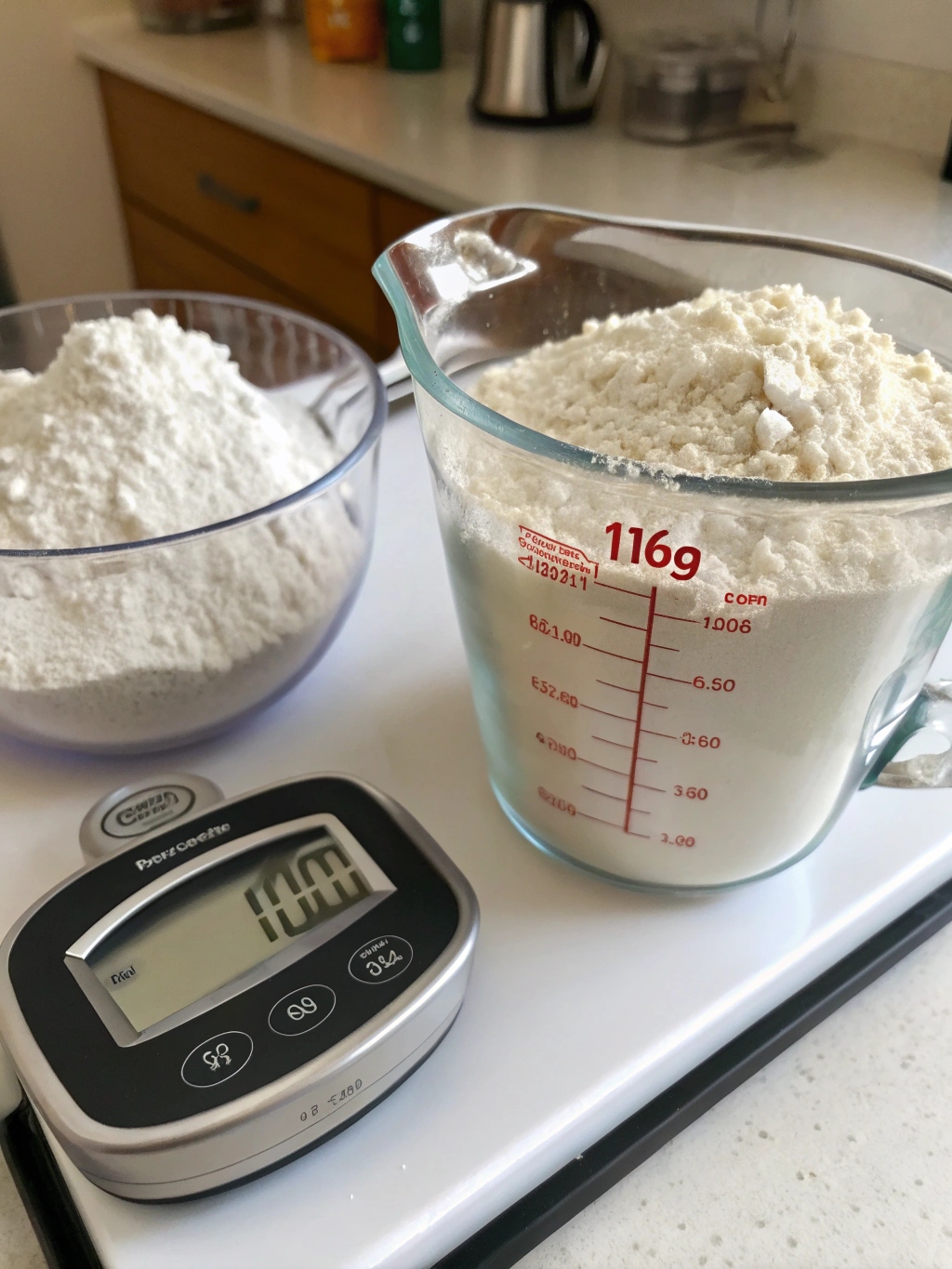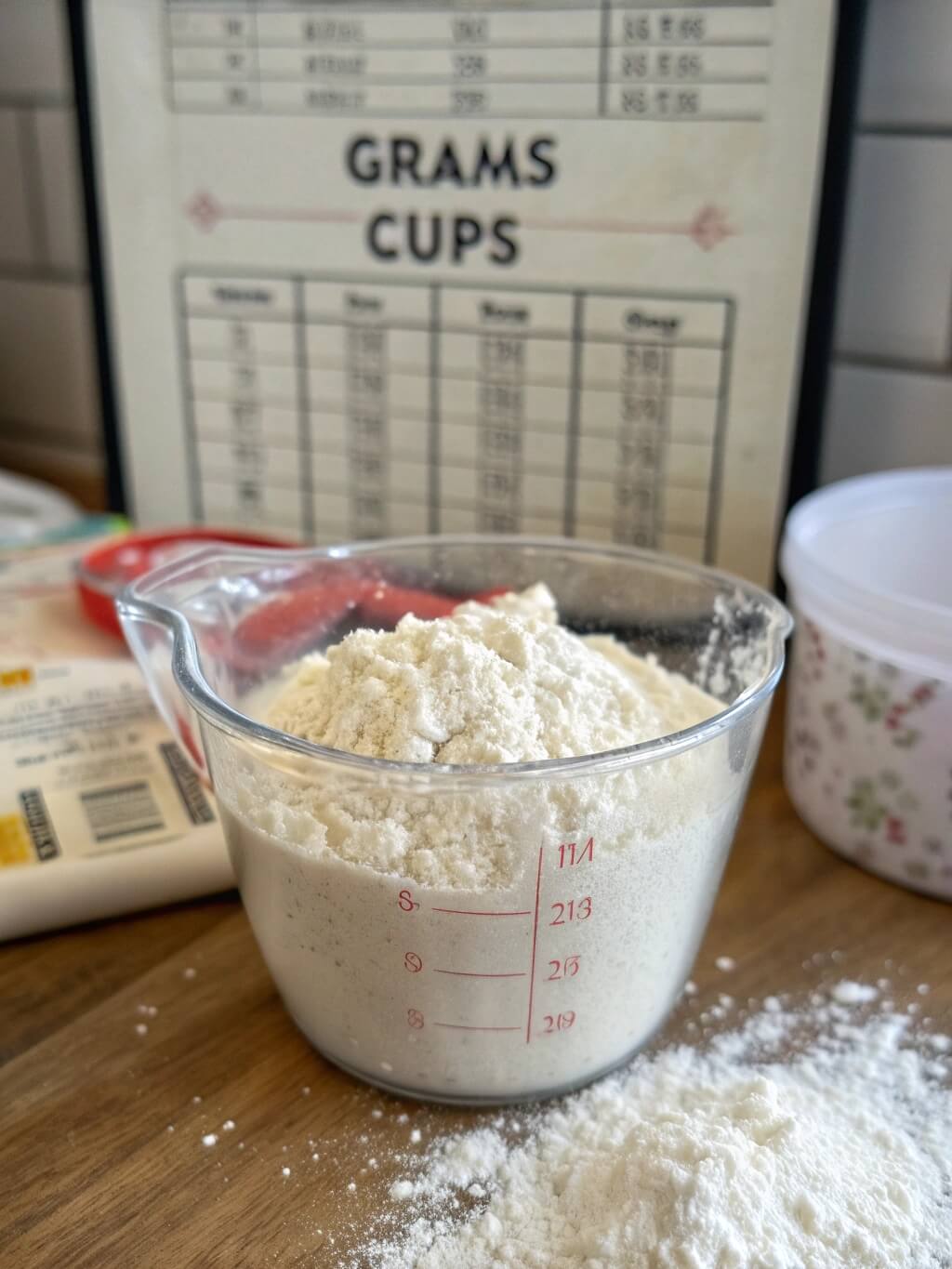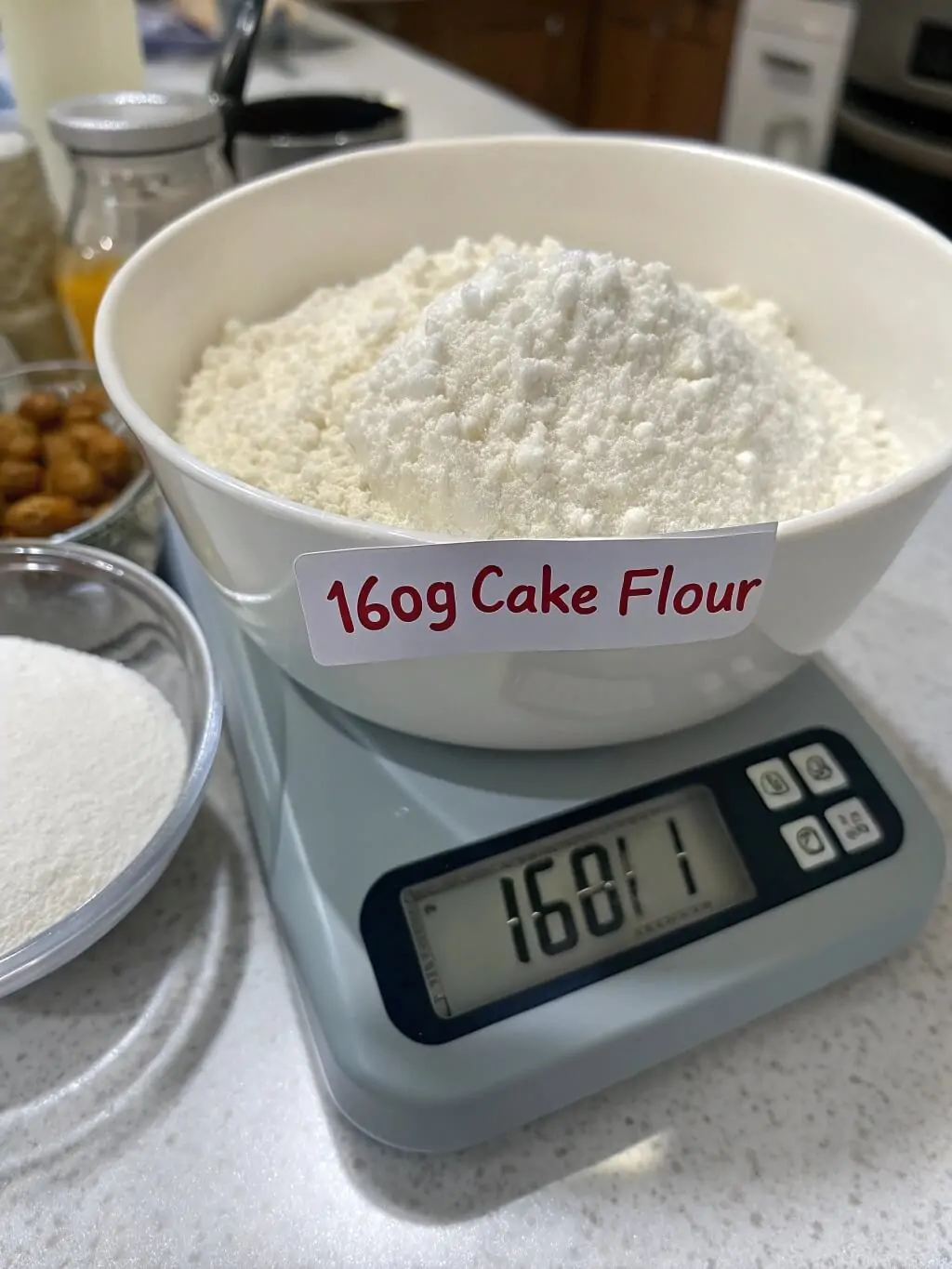Introduction
Precision plays a crucial role in baking, and using accurate measurements ensures consistency in results. One of the most common inquiries among home bakers is how to convert 160 grams of cake flour to cups. This guide provides a comprehensive breakdown of this conversion while offering essential baking techniques to maximize success.
Cake flour, with its fine texture and low protein content, plays a key role in producing tender, delicate baked goods like cakes and pastries. However, converting grams to cups can often be tricky due to variations in how ingredients are measured. While many baking recipes provide measurements in cups, weighing ingredients using a kitchen scale ensures more reliable and consistent results. In this article, we’ll walk through how to convert 160g of cake flour to cups, offer tips for proper measurement techniques, and share insights on how using the right amount of flour can make a significant difference in your baked creations.
Understanding Cake Flour
Cake flour is distinct from other types of flour due to its low protein content, which helps create a lighter, softer texture in baked goods. This makes it ideal for delicate cakes, cupcakes, and pastries that require a tender crumb. Since precise measurements are crucial in baking, properly converting 160 g of cake flour to cups ensures that recipes turn out as intended. Too much flour can lead to dense, dry results, while too little may cause structural issues. For best accuracy, use a kitchen scale or the spoon and level method to achieve consistent and perfectly textured baked goods.
What is Cake Flour?
Cake flour is finely milled from soft wheat and has a lower gluten content than all-purpose flour, making it ideal for soft, delicate baked goods. Its fine texture and lower protein level help create a tender crumb, which is essential for cakes, cupcakes, and pastries. Properly measuring 160 g of cake flour to cups is crucial for achieving the right consistency. Too much flour can make baked goods dense and dry, while too little may weaken their structure. By using precise measurements, either with a kitchen scale or the spoon and level method, you can ensure soft, fluffy, and well-balanced results in your baking.
Differences Between Cake Flour and All-Purpose Flour
The composition of cake flour sets it apart from all-purpose flour, influencing the final texture of baked goods. Converting 160 g Cake Flour to Cups properly ensures the correct flour type is used in a recipe.
- Protein Content: Cake flour has approximately 7-9% protein, while all-purpose flour contains 10-12%.
- Texture: Cake flour is finer and softer than all-purpose flour, which creates a lighter structure.
- Usage: Cake flour is best for sponge cakes, chiffon cakes, and cupcakes, whereas all-purpose flour works well for cookies, bread, and general baking.
160 g Cake Flour to Cups Conversion
Correctly converting 160 g of cake flour to cups is crucial in baking, as even a slight variation in flour quantity can impact a recipe’s outcome. Too much flour can make baked goods dense and dry, while too little can lead to a weak structure. Since different types of flour have varying densities, using weight measurements ensures precision and consistency. Cake flour, being lighter and finer than all-purpose flour, requires careful measuring to maintain its delicate texture. For the best results, always use a kitchen scale or follow the proper spoon and level method when measuring by volume.
Standard Conversion Method
The general conversion for cake flour is:
- 1 cup of cake flour ≈ 120 grams
- 160 g Cake Flour to Cups ≈ 1.33 cups (or 1 cup + 1/3 cup)
Why Weight Measurements Are More Accurate
When following recipes, weighing ingredients ensures uniformity and consistency. Relying solely on volume measurements can lead to inaccurate proportions. In the case of 160 g Cake Flour to Cups, using a digital kitchen scale minimizes measurement discrepancies and enhances precision.
- Reduces Variability: Scooping flour directly can lead to packing, increasing flour content beyond the required amount.
- Maintains Consistency: Measuring by weight ensures the same results every time.
- Prevents Errors: Using grams eliminates fluctuations caused by different cup sizes.
Cup Conversion Table for Various Flours
When converting 160 g Cake Flour to Cups, it helps to understand how different flours compare in volume. Below is a reference table for various types of flour:
| Flour Type | 160g to Cups |
|---|---|
| Cake Flour | 1.33 cups |
| All-Purpose Flour | 1.25 cups |
| Bread Flour | 1.2 cups |
| Whole Wheat Flour | 1.15 cups |
Bakers should note that different flours absorb moisture differently, affecting weight-to-volume ratios. Using the correct conversion for 160 g Cake Flour to Cups ensures that recipes maintain their intended texture and consistency.
How to Measure Cake Flour Correctly
Properly measuring 160 g of cake flour to cups is crucial for consistent baking results. Small measurement errors can significantly affect the texture, rise, and moisture levels in your baked goods. For example, too much flour can result in dense cakes, while too little flour can lead to overly soft or flat treats. Using accurate measurements ensures that your recipes turn out as intended, with the right texture and consistency every time. By taking the time to measure cake flour correctly, you’ll achieve more reliable and delicious results in your baking projects.
Spoon and Level Method
The best way to measure 160 g of cake flour to cups is using the spoon and level method:
Step 1: Fluff the flour using a spoon to aerate it. This helps prevent the flour from being too compacted.
Step 2: Spoon the flour into a measuring cup without packing it down. Let the flour fall lightly into the cup.
Step 3: Level off the excess with a flat edge, like a knife, to ensure an even measurement.
This method ensures accuracy and prevents overpacking, which can lead to denser baked goods and affect the overall texture of your recipe.
Common Mistakes to Avoid
When converting 160 g of cake flour to cups, avoid these errors:
Scooping directly from the bag: This method leads to excess flour, which can result in dry and dense baked goods.
Packing the flour: Packing the flour into the measuring cup creates inaccurate measurements, affecting the texture of your final product.
Not leveling off the flour: Failing to level off the flour after measuring can lead to inconsistent amounts, impacting the overall recipe accuracy and the texture of your bake. Always ensure to measure flour properly for the best results.
Baking Tips for Using Cake Flour
To make the most of 160 g of cake flour to cups, keep these tips in mind:
Sift before measuring: Sifting your cake flour prevents clumps and ensures an even distribution, helping to achieve a lighter texture in your baked goods.
Combine with cornstarch: If you’re substituting cake flour for all-purpose flour, mix it with cornstarch to mimic the softer, more delicate texture that cake flour provides.
Store properly: To maintain freshness and prevent moisture absorption, store your cake flour in an airtight container. This helps preserve its fine texture and keeps it ready for your next baking project.
Best Recipes Using Cake Flour
Cake flour is perfect for creating light, tender baked goods due to its low protein content and fine texture. Popular recipes that benefit from cake flour include:
Sponge Cake: Known for its light, airy texture, sponge cake is a classic dessert that achieves its delicate consistency with the help of cake flour.
Chiffon Cake: This airy and soft cake has a slightly more moist crumb than a traditional sponge cake, and cake flour enhances its fluffy, melt-in-your-mouth texture.
Cupcakes: Using cake flour in cupcake recipes creates a soft, moist crumb, making them perfect for a tender bite that pairs well with any frosting.
Substitutes for Cake Flour
If you don’t have cake flour, try these alternatives:
All-Purpose Flour + Cornstarch: To substitute for 1 cup of cake flour, replace 2 tablespoons of all-purpose flour with cornstarch. This combination mimics cake flour’s lighter texture.
Pastry Flour: This flour has a similar low protein content to cake flour, making it a good substitute for delicate baked goods.
Self-Rising Flour: If using self-rising flour as a substitute, be sure to reduce the amount of baking powder in your recipe, as it already contains leavening agents. This helps maintain the correct balance of ingredients.
FAQs:
What is 160g of flour in cups?
160 grams of all-purpose flour is approximately 1 1/3 cups. However, it’s important to note that flour measurements can vary depending on the type and how it is measured. If you scoop flour directly from the container, it could pack differently, leading to a different weight. To ensure accuracy in your recipe, it’s recommended to use a kitchen scale. When measuring flour by volume, it’s best to aerate it by lightly fluffing it up, then spooning it into the measuring cup and leveling it off. For more precise baking results, using grams as a unit of measurement can help achieve the right consistency and texture.
How many cups is 150g cake flour?
150 grams of cake flour is approximately 1 1/4 cups. Cake flour is a finer, lighter flour compared to all-purpose flour, which can make it more difficult to measure accurately by volume. Because it is less dense, you need slightly more cake flour in grams to make up the equivalent of a cup compared to all-purpose flour. For the most accurate results, it’s always better to weigh cake flour on a scale rather than relying on a cup measurement. This will help ensure the proper texture and consistency for cakes, which benefit from precise flour measurement to create a light, airy crumb.
How many cups is 160grams?
The number of cups that 160 grams equals depends on the ingredient being measured. For all-purpose flour, 160 grams is roughly equivalent to 1 1/3 cups. If you’re measuring other ingredients like sugar, butter, or milk, the conversion can vary. For example, 160 grams of granulated sugar equals around 3/4 cup, while 160 grams of butter is about 2/3 cup. It’s essential to know the specific ingredient for accurate conversions, as different substances have different densities. Whenever possible, using a kitchen scale is the most accurate way to measure ingredients, ensuring that your recipe comes out exactly as intended.
How many grams is 1 cup of cake flour?
1 cup of cake flour is typically 120 grams. Cake flour is much lighter and finer than all-purpose flour, which is why it requires a different measurement for the same volume. Because it has a lower protein content, cake flour helps create tender and delicate baked goods. When converting from cups to grams, be mindful that cake flour has a unique texture, which affects the weight per cup. For best results in baking, it’s often recommended to weigh your cake flour to ensure you’re using the correct amount, as using too much or too little can alter the texture of your cakes and other delicate baked items.
110 Grams to Cups
The conversion of 110 grams to cups depends on the ingredient being measured, as different ingredients have different densities. Here are some common conversions:
- All-Purpose Flour: 110 grams ≈ 7/8 cup
- Granulated Sugar: 110 grams ≈ 1/2 cup
- Butter: 110 grams ≈ 1/2 cup
- Milk or Water: 110 grams ≈ 1/2 cup
For the most accurate measurements, using a kitchen scale is recommended, especially for baking, where precision is crucial. Measuring ingredients incorrectly can affect texture, consistency, and overall results in recipes. Always use the correct conversion based on the specific ingredient to ensure the best outcome.
Conclusion
Converting 160 grams of cake flour to cups correctly is essential for baking success. Accurate measurements help prevent issues like dense cakes or incorrect textures. By using proper techniques, such as spooning the flour into the measuring cup and leveling it off, bakers can avoid common mistakes like overpacking the flour. It’s also important to use the right type of flour for each recipe, as cake flour has a finer texture and lower protein content than all-purpose flour. Following these guidelines ensures consistent, high-quality results, allowing bakers to achieve the perfect, tender cakes every time.

